- Home
- Howard, Bob
The Infected Dead (Book 5): Shelter for Now Page 3
The Infected Dead (Book 5): Shelter for Now Read online
Page 3
“I’m not saying I’d put a shelter on an oil rig, but no matter where you put it, whether it’s on an oil rig, under a Civil War fort, or inside an island, the idea is to stay inside where it’s safe.”
Everyone knew that Titus had selected an island as his location for a survival shelter. Some of the members didn’t like the idea of having the Atlantic Ocean blocking fifty percent of the escape routes, but Maybank had him beat by locating his shelter several miles out into the Gulf of Mexico.
Maybank picked up on Titus’ theme of self-survival.
“Yeah, Jerry. If an apocalypse happens, I’m going inside and staying there. I’m not leaving for anybody.”
“Okay, everyone, let’s move on. Martin, why don’t you tell us about your location?”
One of the oldest members of the survivalist group was Martin Sullivan. He was a bit self-conscious speaking in front of more than two people at a time even if they were old friends, but he got to his feet and cleared his throat.
“Well, I decided to put mine in the middle of a city. It’s coming along pretty well.”
Martin hoped there wouldn’t be any questions, but more than one person raised their hands as he started to sit back down.
“Martin, you know we need more than that,” said Titus.
“How do you build a shelter in plain sight in the middle of a city?” asked Maybank. He was glad to get the attention off of himself.
Martin reluctantly stood back up and said, “It’s not as hard as you think. The Army Corp of Engineers just told the city that they were restoring an old tunnel that was built around 1870. It turns out that President Grant was a survivalist, too.”
Someone yelled, “All politicians are survivalists, Martin.”
That drew scattered laughter from the room. There was no shortage of dislike for politicians in the group, but when they had been approached by the government with the offer to build their shelters meeting all of their design specifications, they couldn’t turn down the government’s money. It meant they could build their dream shelters the way they wanted.
“What do you mean by that, Martin?” asked Titus.
Martin did better answering direct questions, so he went on just a bit more relaxed than he had been.
“President Grant believed another war was just around the corner. He didn’t know if it was going to be another civil war or an invasion from another country, but he believed something would happen. Because of his close ties with Ohio, he knew that Columbus was trying to build a six hundred foot long tunnel in the middle of the city.”
The group was a bit entertained by Martin’s explanation, so there were a lot of good natured questions. Someone asked why in the world did they need a tunnel that big in 1870.
“To keep trains from running over wagons,” said Martin.
This time he had to wait for the laughing to die down after answering the question because he had replied as if the answer was obvious.
Another survivalist said, “You won’t have any shortage of places to put backdoors. Did you have the government buy up all of the buildings around it?”
That made Martin smile, because it was also his idea to have his shelter connected to a rather famous network of not-so-secret tunnels that snaked around under the campus of the Ohio State University.
The North High Street Tunnel was only a few miles from the University, and the only hurdle was getting the exclusive rights to connect to the tunnels. Martin didn’t want anyone else dropping in unannounced once the shelter was complete.
All they had to do was make sure money was placed in the right hands, which wasn’t hard to do since colleges and universities are always being given money by grateful alumni. As a matter of fact, when a rather large donation from an anonymous donor was given to the University in return for ownership of the tunnels, no one had the slightest concern. The University needed access to the steam pipes and electrical conduits that ran through the tunnels, but they were assured that would be no problem. As long as they had access to make those repairs, the school didn’t care who owned the tunnels or what they wanted them for.
New tunnels and doors appeared in places where there had previously been none. The doors had special locks that prevented curious campus work crews from learning what went on behind them. The work was also done practically overnight.
One campus maintenance man told some of his friends that he went into a tunnel one day and made some repairs. He went back the next day, and there was a new tunnel at the very spot where he had been working.
Titus seemed like he was puzzling over something.
“Martin, the main shelter is somewhere under Columbus. Why did you need for it to connect to the tunnels under Ohio State’s buildings?”
Martin grinned, “Because it puts the shelter closer to the airport.”
“You lost me there,” said Jerry.
Martin said, “It’s simple. When I told the money men from the government where I wanted to put my shelter, they said they were worried that their VIP’s would have a hard time getting to it. They said they wanted two out of three plans in place: a helicopter landing, vehicle access, or air access.”
“What about foot access?” asked Titus.
“I asked them the same thing,” answered Martin. “They said with any of the other three choices there would still be at least some foot access to be considered. You still have to be able to get from a plane, a car, or a helicopter on foot into the shelter. They said a lot of people would die right outside their shelters just making it the last few feet.”
“So you chose connecting to the airport so the VIP’s could land in a plane or a helicopter and then travel underground all the way to the shelter. Why didn’t you choose a location closer to the airport?”
“Because the tunnel at North High Street Railroad Station already has a shelter in it. All I had to do was make it better. The best part of the project was the fact that the tunnel wasn’t used very long. It was poorly lit by oil lamps, and when it rained, it didn’t drain well. It smelled so bad that people preferred taking their chances on the thirteen sets of tracks that ran across North High Street. They closed the tunnel after only a few years.”
“You never told us what Grant had built except the tunnel,” said Titus.
“Well, no one ever figured out there was anything but a tunnel, but it was made like a six story building, and most of it was under the tunnel. The rest of it stretched out toward the present location of the Ohio State campus. The floors were all well furnished, but a lot of moisture got in after the tunnel was sealed off. By the time it was opened and dried out, there wasn’t anything of value besides the shelter itself.”
“I like your idea better than Maybank’s,” said Jerry.
Maybank didn’t like the attention coming back around to him, so he asked a logical question about Martin’s shelter.
“There’s almost ten miles between the airport and your shelter, Martin. Are they building an underground railroad for you? You can’t expect a VIP to walk ten miles through tunnels.”
“They’re working on it,” said Martin. “According to the officer in charge of building my shelter, they want another access point along the way. If a VIP lands at the airport in a plane, they want to be able to use a helicopter from there to several different landing zones. That way they can fly closer and then enter the main tunnel for the final leg of the trip. You should see the way stations they put in the tunnel. Supply depots with weapons and ammunition every mile or so.”
“Who do they plan to bring to your shelter,” asked Titus, “the President?”
CHAPTER THREE
LIVING INSIDE MUD Island had been my plan from the start. When I saw the shelter the first time, I decided to give up my apartment in Charlotte and set up house in the middle of nowhere on the coast of South Carolina. It didn’t hurt when I saw I owned a seaplane, a Boston Whaler, and a houseboat all parked by the island, but then I found that my Uncle Titus had left me a really cool undergrou
nd shelter that was well supplied and equally as well furnished. What I really didn’t expect was everything that happened in the next year and a half.
Before the outbreak of the infection I was always a loner with no real plan for the future. My idea of a good day was fast food, preferably delivered, video games, and no interruptions. Now my idea of a good day had changed a bit.
A good day had become a day when no one died, and we had been having good days all through the summer months. Probably because we were following the advice of Uncle Titus and staying close to the safety of our shelter. He said to never leave the shelter, and we weren’t exactly following his advice before this summer. As a matter of fact, we weren’t going to follow his advice once the weather got colder.
I tried to remember what the first day of the infection had been like, but it was such a distant memory that I was having trouble skipping over everything that had happened in between to get to the beginning. It was easy to remember the part about sitting in a tree, because that’s exactly where I was again. The difference this time was that it was part of our plan, and it was also a lot colder than it had been back then.
The Chief had been laying out our plan to head north for the last few months. To say that he was fine tuning the details was an understatement. I had heard him saying more than once that we had to stop relying so much on luck and start thinking of strategies in advance.
That was why I was in a tree again. This time there weren’t any mosquitoes, and the climbing had been much easier. I studied my forearms and wondered about how much they had changed since I started lifting weights. They had been much thinner, and they hadn’t been suited for climbing trees.
“Okay, Ed. Let’s see how fast you can get down from there.”
The Chief was a few yards from the base of the tree, and I was on the ground almost before he could start his stopwatch.
“Not bad,” he said appreciatively. “You broke your old record climbing the tree, so I’m not surprised you can get down faster without breaking an ankle.”
“Did you happen to notice I picked a tree without low hanging branches?” I said with pride.
The Chief gave me his trademark smile and nodded.
“All we need to do is find you some walls to climb for practice, and you’ll be able to get away from the infected wherever we go. Now let’s see you go up that tree again, but instead of coming back down, I want you to jump over to another tree.”
A rustling in the branches above caused both of us to tense up, but we relaxed when we saw Tom peering down at us. He had just jumped from another tree onto a thick limb about ten feet away. Then he rocked forward and backward as he tried not to fall off. Both of his arms were pinwheeling in the air as he tried to get his balance.
“It’s not as easy as the Chief makes it sound, Ed.”
The strain in Tom’s voice was obvious, and he gave up trying to stay on the limb without grabbing at the trunk of the tree. One more inch forward the next time he rocked, and he was going to join us on the ground.
A second rustling of the trees from a new direction caused us to tense up again. This time it wasn’t above us but was coming from the dry underbrush filling the gaps between the trees.
We saw the bushes moving before we saw an arm poke through, and then the infected stumbled and fell the rest of the way.
Tom moved further out onto the limb to be able to see the surrounding area.
“He doesn’t have any friends with him,” he called down to us.
Before the infected could push itself up onto all fours, I crossed the short distance between us. I had a short hatchet in a loop on the side of my jeans, and I pulled it to the top of an arc and just let the weight make it swing down toward the side of the creature’s head.
I was proud of myself because I let the hatchet rotate as it descended, and the blunt side crushed the skull of the already dead thing that never gave a thought to what was happening. The hatchet did its damage without getting stuck in the head of the infected.
“That’s the kind of training I had in mind,” said the Chief. “With Tom as overwatch, one of us could move in for the kill while the other covered him. That infected gave us a practical lesson. When we go north, we need to work like that as a team.”
Tom landed next to the Chief, and the two men walked over to where I was inspecting the infected dead that was face down in the brush between two trees.
The Chief seemed to block out what little bit of sunlight was coming through the brown leaves that still clung to the branches up above. Tom was the same height as the Chief, but he had a build that suited his former profession as a baseball player. The Chief was just plain massive, especially in the chest and shoulders.
“Anything interesting about this one?” asked Tom.
“He’s thinner than usual,” I said. “I don’t know if he was a thin survivor who was recently bitten or if he’s been walking and decaying at the same time.”
“Judging by the smell, I’d say he’s been ripening for a long time,” said the Chief. “What was that Cassandra said about reaching a saturation point where there would be fewer living getting bitten and fewer replacements for the infected we eliminate?”
I thought a moment and added to what the Chief had said.
“Cassandra said the doctors on her ship had calculated that the human race would be wiped out in less than two months, whether it was by being bitten or killed by other survivors.”
“Any way you do the math,” said Tom, “it means we’re eventually going to face off with someone or something that’s trying to kill us. If we start winning the war against the infected, the survivors are going to start showing up more often as they search for a safe place to stay.”
Cassandra had arrived during the summer as the only survivor on a hospital ship. The doctors had given her information that we, the Mud Island survivors, hadn’t heard. The virus that had spread across the world was being passed on in the bites of people who were supposed to be dead, but things got really complicated when they had learned the virus had also managed to get into the food chain.
Our own doctor, affectionately known to our group as Bus, had started a serious regimen of testing everything. He tested the water, the air, plants, and even the insects. His biggest fear was that mosquitoes could carry the virus. If that happened, it would be almost as bad as the radioactive fallout that had caused a fellow group of survivors to seal themselves inside the shelter at Lake Norman in North Carolina. We would be forced to seal ourselves inside the shelter on Mud Island or move permanently to a colder climate where mosquitoes couldn’t go.
So far Bus hadn’t found a trace of the virus in mosquitoes, but every blue crab he tested had produced positive results in concentrations so high that we had no doubt that being pinched by a blue crab could spread the disease. Bus had found it to be ironic that you could be scratched by an infected dead and survive, but being pinched by a blue crab would kill you.
One of our community members, Jean, had been scratched badly by an infected, and she had been seriously feverish for a couple of days, but not only did she survive, she went on to have our baby boy she had been carrying at the time.
Bus had eventually confided in the rest of the group and told them he had at least some small hope that Jean had passed along an immunity to the virus to our son, but we might never know for sure.
Other tests gave elusive results. Shrimp that were caught at low tide tested positive for the virus. Fish that were caught in the deeper water at the end of the houseboat did not carry the virus even though some were large enough to feed on the shrimp. Despite those results, fresh fish hadn’t been on our dinner table yet.
I noticed the sea gulls had been feeding on the shrimp, and from time to time we would see one catch a small blue crab. It didn’t appear to make the sea gulls sick, but when Bus shot one and tested it for the virus, he found it to be infected. As long as the sea gulls didn’t start attacking people, we didn’t really care if they were
infected. They weren’t on our menu either, but we made a note to expect chickens to be carriers, too.
I flipped the infected over onto its back, and I had to stop myself from gagging. Bus had told us it was important for us to learn as much about the infected as we could, and that meant tissue samples.
We all carried Zip Lock bags for just this type of opportunity, so I pulled mine out of my pocket along with a knife.
“I hope Bus appreciates this,” I said to no one in particular.
The Chief and Tom retreated a safe distance away. Not that they weren’t safe while I got Bus his precious tissue samples, but the smell was awful.
Bus had told us it was important to get tissue from the base of the skull, and if possible to get some of the spinal fluid.
“Great,” I said out loud. “Next time I need to remember to hit them in the back of the head.”
They were covering their mouths as well as their noses, but I could tell they were trying not to laugh.
“Is there a rule that says I have to do this just because I’m the one who killed it?”
That didn’t help. They both started laughing. That made them uncover their mouths and start gagging. I was fine with that until I started laughing with them. I was pretty sure it would take at least a week for me to get the taste out of my mouth.
There was more rustling in the underbrush as Kathy, Jean, Colleen, and Cassandra all emerged from the direction of the water that separated Mud Island from the mainland. In the middle of the group being protected by the women was Tom’s daughter, Molly. She had been inside the shelter for the longest stretch of any of us, and she had begun asking to go out on patrol with the rest of us.
Tom had said no without hesitation, but even he had to admit Molly needed some fresh air and sunshine. He had agreed as long as she was well protected, and this group of women was about the best protection she could have.
They were formed up around Molly with their M-4’s slung but ready. Molly had asked for a rifle of her own, but that was where Tom had drawn the line. She had a machete and a knife, but he wasn’t ready to see her with a gun.

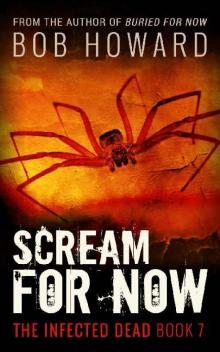 The Infected Dead (Book 7): Scream For Now
The Infected Dead (Book 7): Scream For Now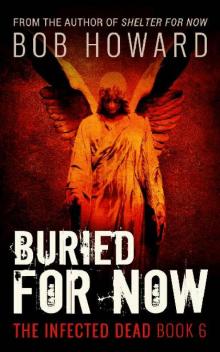 The Infected Dead (Book 6): Buried For Now
The Infected Dead (Book 6): Buried For Now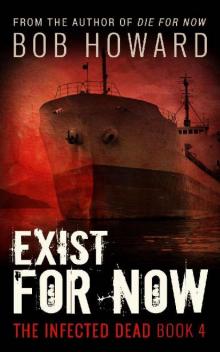 The Infected Dead (Book 4): Exist For Now
The Infected Dead (Book 4): Exist For Now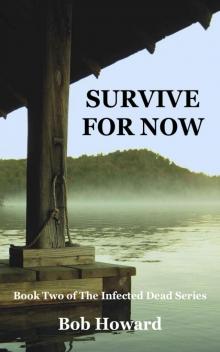 The Infected Dead (Book 2): Survive For Now
The Infected Dead (Book 2): Survive For Now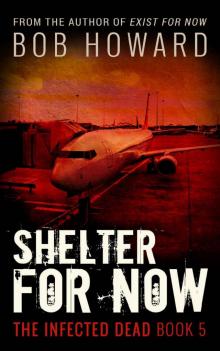 The Infected Dead (Book 5): Shelter for Now
The Infected Dead (Book 5): Shelter for Now